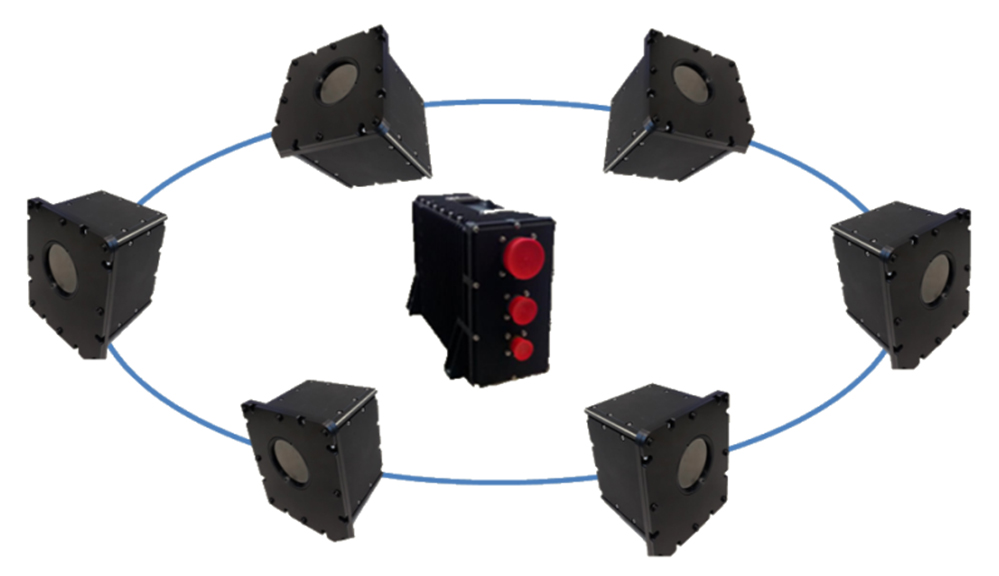
Leonardo develops multi-aperture infrared system
by Luca Peruzzi
Leonardo’s Electronics division is developing a new-generation infrared situational awareness and attack warning system called MAIR (multi-aperture infrared), consisting of a multiple distributed camera system operating in the IR spectrum, able to automatically detect and track air vehicle and missiles and to provide day/night spherical imaging for situational awareness.
Based on its experience developed in the infra-red search and tracking (IRST) sector with both PIRATE system and latest generation Skyward family applied to both combat aircraft and unmanned air system, ‘Leonardo has developed a distributed suite of sensor heads in the IR spectrum with a dual main mission: provide not only multiple simultaneous missile launch warning but also the required accuracy for directional countermeasures (DIRCM) engagement in addition to hostile gun fire indication, as well as day/night situational awareness in degraded weather or operational conditions”, confirmed Leonardo’s VP IRST Programmes Giorgio Balzarotti to EDR, during a phone interview after a recent press tour focusing on airborne radar and IRST products at the company’s Nerviano-based facility near Milan.
The Leonardo representative hasn’t provided information on the single or dual colour imaging and IR-operating sub-band of the system but acknowledged the company has conducted an extensive campaign with own hyperspectral system against a range of targets to better determinate the most effective operating-band. According to company’s development and testing roadmap, ‘the prototype of MAIR is expected to complete ground trials within 2018 in preparation for flying on test bed platforms in early 2019. The latter include a two-seats Aspect general aviation aircraft and a commercial helicopter, respectively equipped with two small conformal pods, one on top and the other underneath the general aviation aircraft, each incorporating five sensor apertures, and a number of sensor heads, which prototype was seen during the Nerviano’s facilities tour. ‘The final MAIR suite for rotary-wing applications is expected to include up to 5-6 heads depending on spherical coverage requirements, each weighting about 2.5 kg with one operating as master/interfacing unit with on-board mission system, if video coverage is not required. In the latter case a control unit is added. Each sensor heads will also include a laser warning aperture capability, Leonardo representative said to EDR during the phone interview.
In addition to rotary-wing applications, the MAIR has been conceived and developed for both transport and combat aircraft, in the latter case exploiting all the processing experience developed with fast-jet IRST. ‘Italian MoD has expressed strong interest in the system since its inception, but as of today, the MAIR is being developed with company funding’, Balzarotti explained.
Leonardo did not comment on any specific platforms it is targeting, but it is understood that the company has taken into account the expected needs of the Italian Armed Forces as well as export users. Platforms such as the Italian New Exploration and Escort Helicopter (NESS) could be candidates for the system. Based on what seen during the visit, it would appear that the sensor heads would be also suitable for retrofit onto platforms with current-generation missile warning systems.
